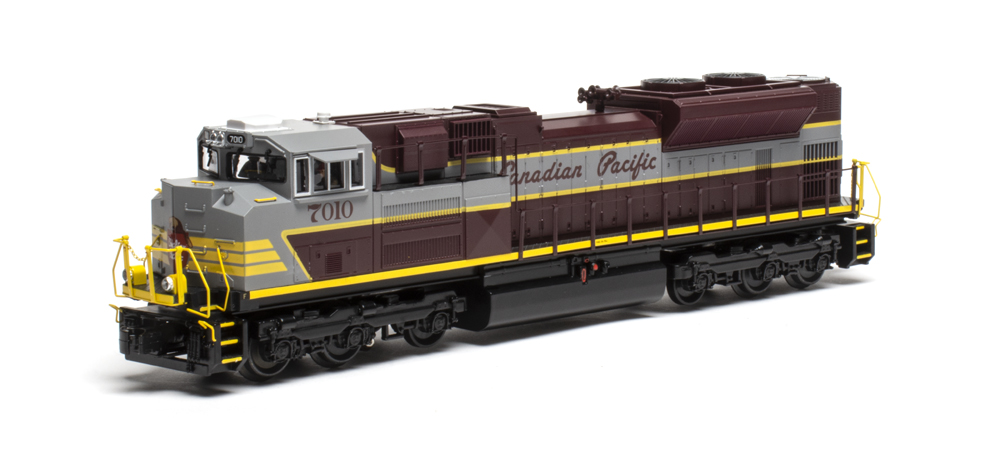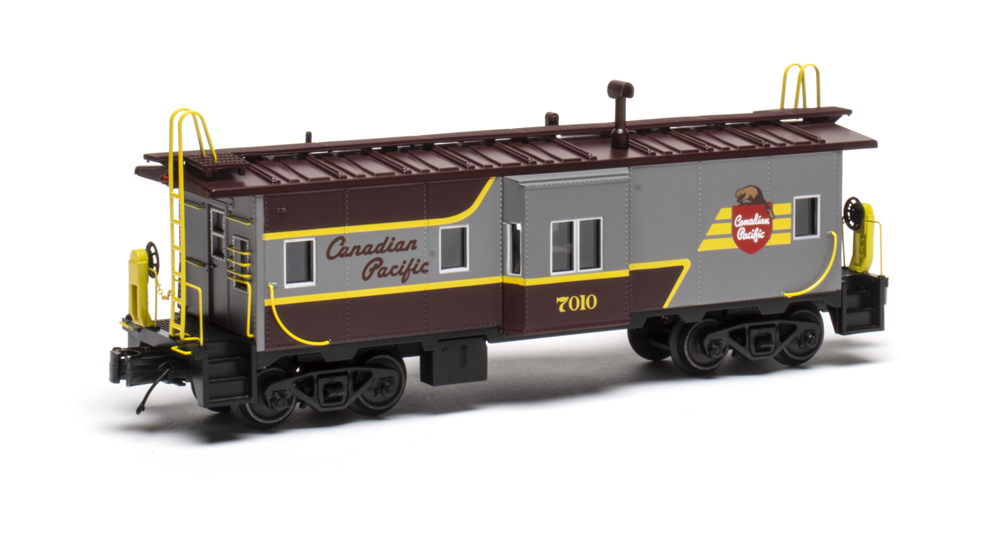O Gauge Imperial Railking SD70ACe

O Gauge Imperial Railking SD70ACe: MTH’s RailKing line has long been a boon to operators who wanted new locomotion for their layouts that have O-27 or O-31 curves. Even though some of the earliest models appeared closer to S gauge than O (I’m thinking of my diminutive F3s from 1996), RailKing has improved over the years.
While some older scale-sized tooling did migrate to the product line, the most important refinement was the development of the Imperial level. Locomotives became a bit larger, but still easily integrated with traditional rolling stock. The best part is the level of detailing is ramped up, and the sound and command systems are on par with Premier line products.
MTH’s series of SD70ACe diesels in the Heritage liveries of various railroads, with companion cabooses, are sure winners if you like modern locomotion yet lack the broader curves to accommodate the scale-size versions.
Opening the box

I’m a fan of EMD’s SD70ACe diesels. They look big and chunky, and the nose and body have lots of interesting angles. There’s a lot of “eye candy.”
The pilot has add-on handrails, a safety chain, and down below an uncoupler arm as well as air-brake and multiple-unit connections. The O gauge model also has ditch lights mounted on the platform. These join the headlight in steady illumination while the locomotive is running.
The nose has cast-in grab irons as well as a cast-in door. The top of the nose has four add-on grab-irons, along with sand fill spouts. You’ll note the nose’s top is flat, but then slants down toward the sides. The two areas with the sand caps angle down and toward the front.
The cab’s forward windows have a nice black frame simulating a gasket. They have two wiper arms per pane, and you can easily see the crew figures inside. Just above, you’ll find the twin-beam headlight and number board with the cab number, 7010, easily visible. The cab roof has an air conditioner and communications gear.
Far from being flat, the hood has an array of different angles and detail points. These include the exhaust for the smoke unit, a drop in roof height with a horn mounted in the middle, and downward angles on the sides. Then the roof rises for the cast-in radiators on the rear radiator “wings.” The overhang is a pretty neat visual feature.
The sides of the shell have terrific detailing with hatches, louvers, and hinge and latch detail for 17 access doors. At the rear, you’ll find see-through screens on the sides, a sand filler cap, a rear headlight, and cast-in grab irons.
Below the deck you’ll find die-cast metal trucks and a heavy fuel tank (the speaker housing) with a sight gauge with red accents. This model packs quite a bit of detailing in a mere 17”-long body!
The vintage Canadian Pacific paint scheme was superbly crafted, and I’m still puzzled as to why corporate management later dumped it for the whole “CP Rail” red livery. I guess that’s what the other cool kids in railroading were doing then.
Don’t forget the caboose

The bay-window caboose is as nice as they come. The design is pleasing, and it has plenty of rivet and seam detailing. But where it excels is all the add-on detailing.
The car has a curved grab iron on each corner. There are handrails on each side of the platform – two attached to the cabin and two on the platform. There’s also a rather impressive brake wheel with a simulated chain. You’ll spot grab irons on either side of the coupler as well.
A ladder rises from the platform to the roof. It rises about an inch above the roof – giving any O scale brakeman an extra element of stability when climbing up on the roof. A detailed running board extends the length of the roof.
Other details I found interesting were the protective bars over the cabin’s rear windows. Sadly, these are probably for the crew’s protection from rocks or other objects tossed at this moving target!
In short, this caboose is as nice as they get – and the fact it matches the old-school Canadian Pacific livery of the locomotive saves you from needing to track down your own caboose.
On the test track
The RailKing locomotive offered superb performance all around.
The sound system was spot on, and it activated when commanded. The horn, bell, revving sounds, and crew conversation added to the fun. The couplers also responded instantly. The sound package was great, and the smoke unit was up to the “fill the basement” vapor we’ve come to expect with fan-driven smoke units.
The model’s speed range was excellent. Our high-speed average came out to 72 scale miles per hour. The command-mode low speed was 1.9 scale miles per hour, while the conventional-mode low speed was 1.1 smph. Motor operation was very smooth at the lowest speeds. Our drawbar pull amounted to 2 pounds, 1 ounce, which I believe is quite impressive for an O gauge locomotive of this size.
To sum it all up, the Imperial RailKing Electro-Motive SD70ACe is a good rendering of one of my favorite modern designs. The fact that MTH has paired it with a matching caboose is a bonus. If you’re a fan of modern locomotives yet find that heritage liveries are close to your heart, you should check it out.
Model courtesy of Sommerfeld’s Trains & Hobbies, Butler, Wis. More information at Sommerfelds.com













